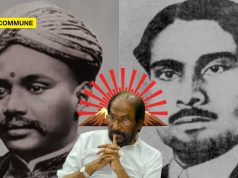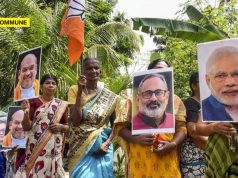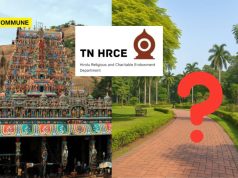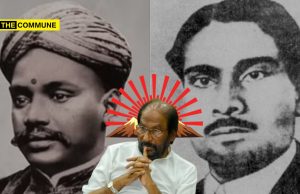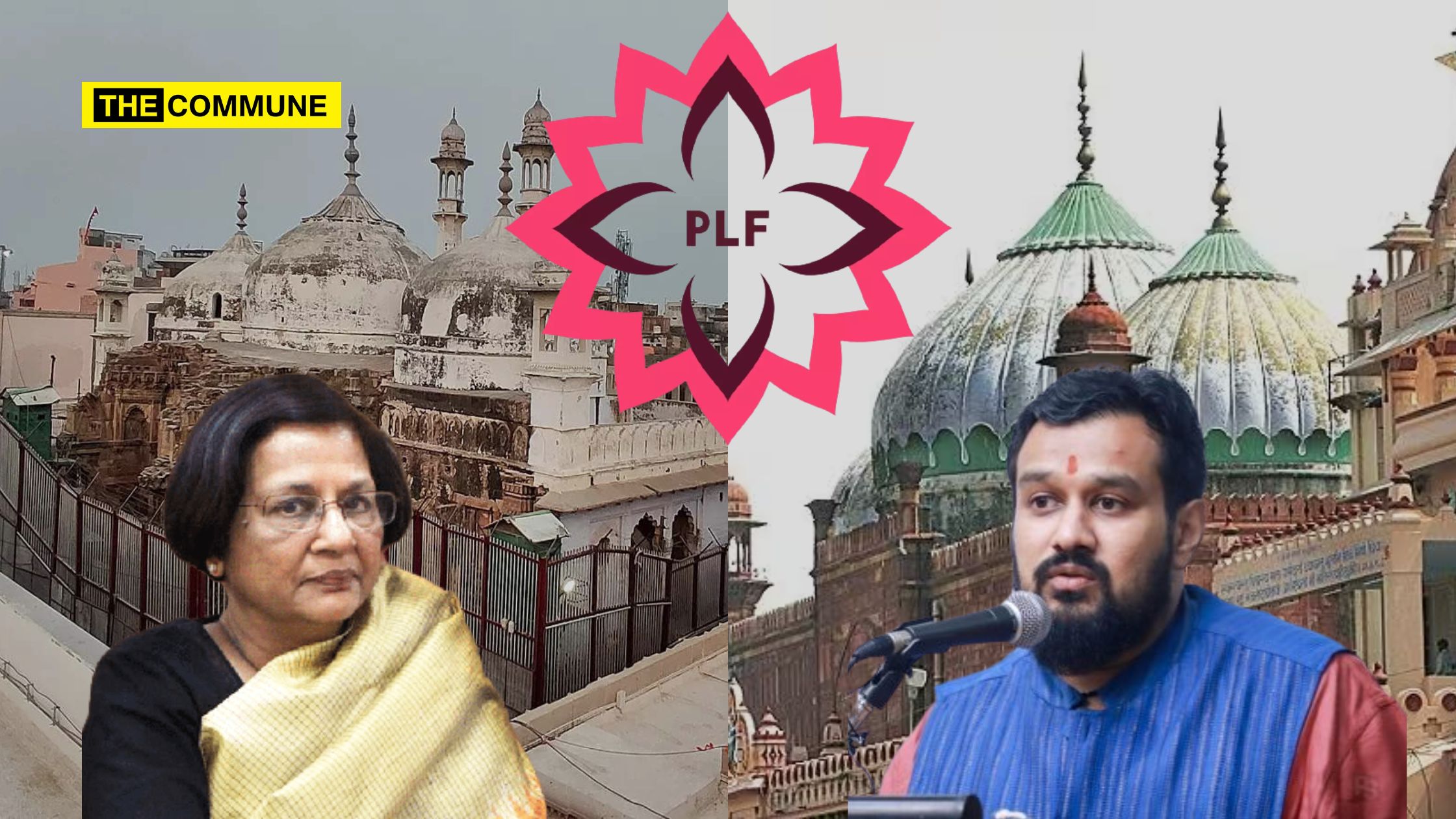
Pondy Lit Fest 2023 concluded on a high note, featuring numerous panel discussions that fostered critical thinking. The festival united literature enthusiasts, scholars, and diverse minds, promoting cultural enrichment. On day two the most anticipated discussion concerning the cases of Mathura and Kashi temples was held. Meenakshi Jain and Vishnu Jain participated as speakers with Alo Pal as the moderator. Meenakshi Jain is a renowned historian known for her expertise in the field of Indian temples and Hindu Civilisation. Meenakshi Jain’s book titled “Flight of Deities and Rebirth of Temples: Episodes from Indian History” is a comprehensive exploration of the history and cultural heritage of Indian temples. Vishnu Jain, along with his father, have actively engaged in the legal battle for the Kashi Vishwanath Temple and the Krishna Janmabhoomi, among many other battles for Hindu temples demonstrating their deep commitment to preserve India’s cultural and religious heritage.
Connecting Sri Krishna To Mathura: Literary Evidence
Meenakshi Jain connected various literary evidences to Sri Krishna and Mathura. In popular memory, Sri Krishna is primarily associated with the Gita and Mathura. The earliest literary reference to Sri Krishna can be found in the Chandogya Upanishad, which dates back to around 900 BC, where he is mentioned as “Devaki Putra Sri Krishna.” This Upanishad recounts that Sri Krishna approached his Guru Angirasa and what he had learned from his teacher. Interestingly, the teachings of Sri Krishna align closely with those of Devaki Putra, as highlighted in the Gita.
Beyond the Chandogya Upanishad, she explained the other pre-common era (CE) literary references to Sri Krishna. Panini, a Sanskrit Grammarian from around 600 BC, mentions the term “Krishna Bhakts,” indicating the presence of Krishna’s devotees during that period. Patanjali, who hailed from Mathura, authored a mahabhashya on Panini’s rules, in which he discusses the order of precedence when two names are in the same context. Patanjali notably points out an exception to Panini’s rules, suggesting that when the names “Vasudev” and “Arjun” appear together, “Vasudev” should take precedence as he is the one to be revered.
Additionally, accounts from the time of Megasthenes, before the common era, mention Mathura and Gokul as strongholds of the Vrishni clan, to which Sri Krishna is said to be descended. Even a Roman historian around 1 AD records an incident where Alexander’s army encountered an image of Sri Krishna held by the army of Porus, serving as a source of motivation.
She concluded that the literary references collectively provide valuable insights into the historical and cultural significance of Sri Krishna, tracing his connection to Mathura. But, as a student of civilisational and popular memory, she lamented that popular memory has been vindicated by literary, sculptural, and epigraphic evidence.
Tracing The Path through Inscriptions
Now Meenakshi Jain linked various epigraphical evidence from Mathura to Sri Krishna. She expressed her dismay over the fact that the city had been subjected to indiscriminate plundering for nearly 800 years, from the times of Mohammed Ghaznavi to Ahmad Shah Abdali, which had resulted in only fragmented historical records available for study. An 8 1⁄2 feet tall door jamb (Vasu Doorjamb Inscription) associated with Krishna was discovered at the Katra Keshav Deo temple premises. During the reign of a ruler (that ended in 15 CE), the inscription, of which only parts can be read, describes the Toran and states, “My name is Vasu, and I erected this shrine in honour of Vasudeva, God of Gods.” Approximately a century after Ghaznavi’s invasion, a partial inscription bearing the name Jhaja was discovered, stating, “I have rebuilt the temple.”
The Mora Well inscription, discovered in a well in the village of Mora, located 11 kilometres away from Mathura, mentioned the construction of a stone shrine dedicated to the “Five Vrishni Heroes,” namely Vāsudev, Samkarshan, Pradyumn, Samba, and Aniruddha. In 1911, during excavations at a mound in the Mora area, three sculptures were unearthed, which were headless but had torsos intact and were believed to represent two male deities and one female deity. Renowned art historians from around the world unanimously identified them as Vasudev, his brother Samkarshan, and their sister. She speculated that these markings could potentially have been indications left behind by Sri Krishna, serving as telltale signs to protect his sacred space.
Mentions In Chronicles
In the last set of evidence, Meenakshi Jain referred to various accounts of chroniclers. The historical account provided by Udbi, who chronicled the era of Mohammed Ghaznavi, expressed astonishment at the beauty of the temples and their artistry. He described these temples as creations beyond human capability, suggesting that only Gods could have built such marvels. Accounts from the Lodhi and Tughlaq periods also refer to these temples. During Akbar’s reign, Jesuit Antonio Monserrate noted in his accounts that all temples in the region had been destroyed, with only one temple remaining. In 1670, during the time of Aurangzeb, the Mathura temple was finally demolished, as recorded in Maasir-I-Alamgiri. Subsequently, the name of Mathura was changed to Islamabad.
Aurangzeb ordered destruction of temples at Kashi & Mathura.
'Masir i Alamgiri' – By Mohd Saqi, Musta'idd KhanFarman by Aurangzeb to destroy Kalkaji Temple.
Its only natural that 'Razakars' who waged Jihad 4 Nizam of Hyd in 48 will stand for d 'king of Jihadis' Aurangzeb! https://t.co/Ah8l0oJRyE pic.twitter.com/6GDirL7yBg
— Nitin Gupta (@Nitin_Rivaldo) April 8, 2021
Niccolao Manucci, an Italian traveller, documented the presence of a temple in Mathura in his historical accounts.
From Invasions To Legal Battles
Vishnu Jain continued the discussion by summarising the history of the disputed land. He said that 13.37 acres of land originally belonged to the temple. However, the temple currently possesses only around 11 acres, while approximately 2.5 acres are under the Shahi Idgah Masjid Committee. In the Battle of Govardhan (1770), the Marathas wrested control of this area from the Mughals. Subsequently, in 1803, the East India Company took charge of the land. In 1815, through an auction, Raja Patni Mal of Banaras acquired the entire property. During this time, Hindus emerged victorious in over 10 litigations in British courts against the Shahi Eidgah mosque’s claims to the land. In the 1940s, Raja Patni Mal’s descendants sold the land to the “Sri Krishna Janma Bhoomi Trust ” for ₹13,400. In 1958, a trust named Sri Krishna Janma Bhoomi Seva Sangh was established by prominent individuals of that era. They initiated a civil suit to reclaim the land illegally held by the Shahi Idgah Masjid. However, in 1968, an agreement was reached between Sri Krishna Janma Bhoomi Seva Sangh and the Masjid, resulting in the land being ceded to the Masjid. Subsequently, it was discovered that the trust involved in the agreement was fraudulent and lacked any legitimate rights to the land or the authority to make compromises with other parties. The father-son duo identified that in case of a fraudulent land settlement, the same can be challenged at any point in time.
In 2020, a civil suit was filed by Hari Shankar Jain and Vishnu Shankar Jain. Subsequently, they requested a transfer of the case to the Allahabad High Court, citing the need for a more expeditious legal process given the case’s significance. The Allahabad High Court accepted the transfer request, leading to the relocation of all petitions related to the aforementioned matter for the original trial. Despite opposition from the Shahi Idgah Masjid Committee, the Supreme Court concurred with the transfer of all petitions to the Allahabad High Court and instructed a time-bound trial. In conclusion, Vishnu Jain expressed his confidence in a favourable outcome for the Hindu side in the legal battle. He also emphasised that Places of Worship cannot be viewed in a binary manner, highlighting how the religious character of a place remains unchanged once a deity is established there.
Gyanvapi/Kashi
Battling Adversity: A Resilient City’s History
In 1940, during the excavation for a railway line near Raj Ghat, numerous seals and artefacts were discovered. Kashi faced attacks twice during the time of Mohammed Ghaznavi. Copper inscriptions also reveal the resilience of the Gahadavala dynasty, which moved its capital from Kannauj to Kashi to protect the sacred religious site. During the Gahadwala rule, Govind Chandra had a minister named Lakshmi Dhar Bhat, who wrote the book “Kritya Kalpataru ” to guide pilgrims through the temples and sacred sites of Varanasi. After the fall of the Gahadavala dynasty, there are records of the Original Kashi Vishwanath temple’s destruction by Qutubuddin Aibak.
In response to all the pillaging, a pillar of victory was erected as a symbol of resilience by a ruler of the Sena Dynasty. Many local rulers also made efforts to restore dilapidated temples. In the 16th century, six Marathi families migrated to Banaras, with Narayana Bhat authoring a book on this holy place. With the assistance of Raja Todar Mal, Narayana Bhat constructed a temple for devotees. These instances highlighted the endeavours of Hindu rulers and devotees in preserving their religious places. It’s worth noting that a descendant of Narayana Bhat, named Gaga Bhat, participated in the coronation of Chhatrapati Shivaji Maharaj. Meenakshi Jain pointed out that all these episodes narrate a distinct story of Hindus resisting invaders’ destruction. She said that even though Hindus lacked political power, they clung to their spiritual sites and made efforts to rebuild them every time.
A Vigorous Battle
Vishnu Jain continued to explain the nuances in the Gnyanvapi case and added his personal observations. Vishnu Jain voiced his belief that the original temple site is situated within the Gyanvapi mosque and he argued that the Razia Mosque is a newly constructed building that did not “use” the temple ruins. He then quoted a line from James Prinsep which states the importance of Ganga, Kashi, Vishveshwara Temple, and Charity. He also quoted Skanda Purana which exemplifies the importance of Kashi for liberation in a Hindu’s life. A title lawsuit initiated in 1991 continues to endure, as it remains unresolved whether the location falls within the purview of the Places of Worship Act.
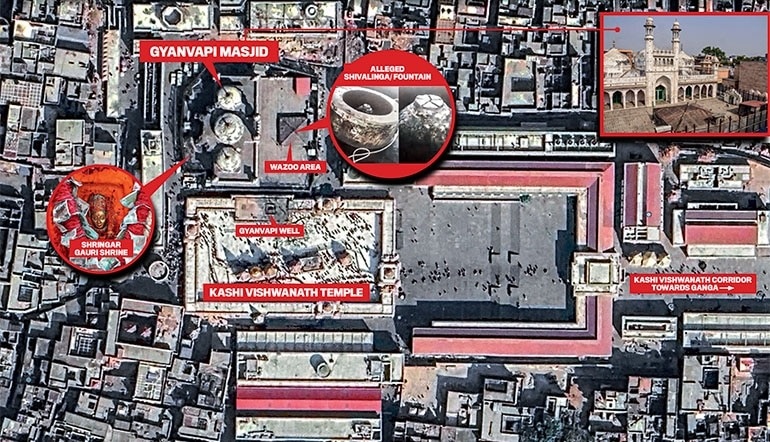
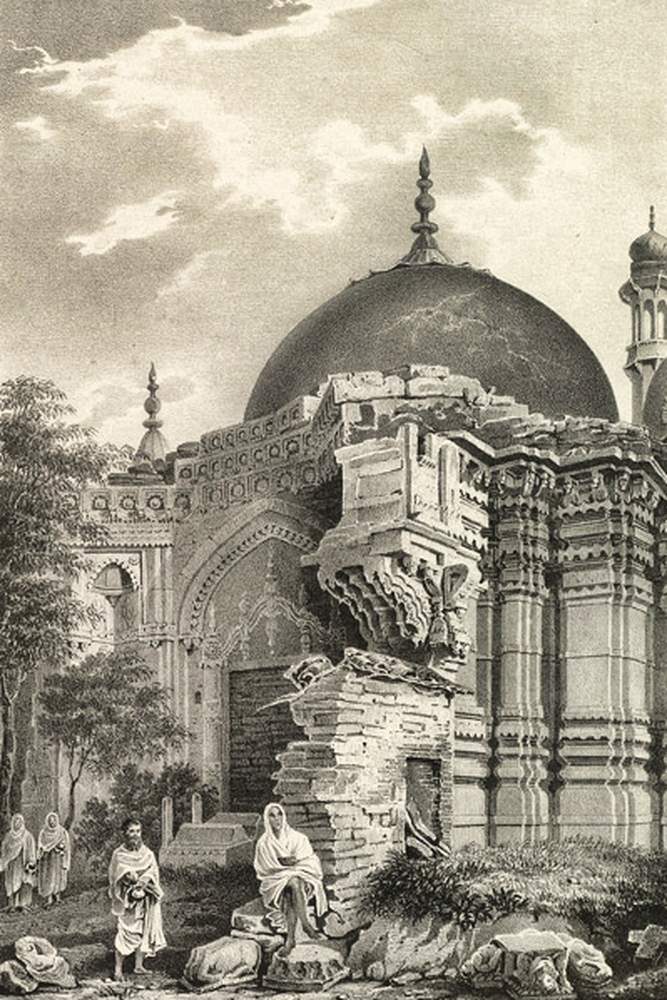
The new temple complex that is currently in use was constructed by Ahilyabai Holkar in 1770. Vishnu Jain explained how the three domes of the Gyanvapi Mosque stood on the existing ruins of Temple Shikharas. Sanskrit slokas and bells could also be seen on all the pillars in the cellars of the existing mosque premises. In 1993, during Mulayam Singh’s government, barricading was done around the mosque in question. The three deities to the north of the mosque were initially inside the barricaded area but were moved outside during this period. Prayers were also being conducted inside the premises in question until that time. In violation of the Places of Worship Act, Hindus were subsequently expelled from the premises in question, and the religious rituals came to an abrupt end.
As per Islam, there is a rule that prayers and namaz can be offered only after performing Wuzu, a ritualistic ablution in which one cleans oneself properly before worship. The devotee is expected to clean their hands, feet, mouth, and arms, among other body parts, before offering their prayers. Vishnu Jain recalled his experience during an inspection of the premises of the Wuzu Tank. When the water level was lowered, a Shiva Lingam became clearly visible. He enthusiastically conveyed the jubilant feelings within the advocate fraternity upon witnessing the Shiva Lingam. He promptly requested the area under dispute to be sealed. After several discussions in the district court and Allahabad High Court, the Archaeological Survey of India (ASI) submitted a report to the Allahabad High Court, suggesting that a test could be conducted on the Shiva Lingam without causing damage. However, the defendants from the Muslim community, while acknowledging it as a Fountain Head, rejected the directions for testing and sought a stay order from the Supreme Court. Although the test on the Shiva Lingam was postponed, Vishnu Jain subsequently approached the District Court to request a survey of the entire disputed mosque area, excluding the Wuzu Tank. On 3 August 2023, the Allahabad High Court ruled in favour of conducting a survey that excluded the Wuzu tank area. In response, the Anjuman Intezamia Masjid Committee appealed to the Supreme Court. The Supreme Court declined to make a ruling and instead directed an ASI survey to be conducted. Vishnu Jain expressed confidence that when the ASI submits its report on October 4th, the outcome will be historical.
Click here to subscribe to The Commune on Telegram and get the best stories of the day delivered to you personally.

